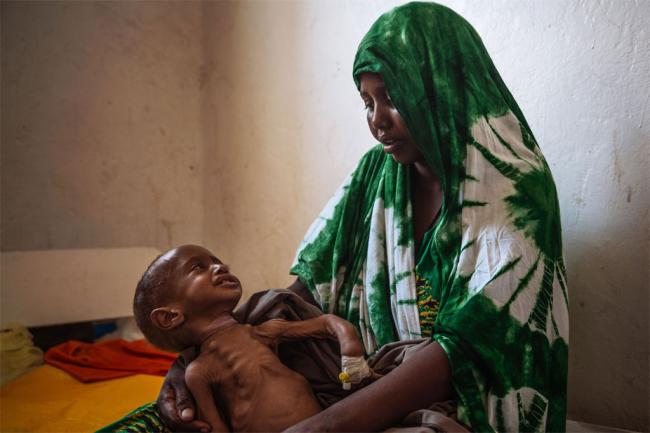
Somalia: 1.4M children to suffer acute malnutrition this year – UN agency
The figure includes more than 275,000 children who have or will suffer life-threatening severe acute malnutrition.
“The combination of drought, disease and displacement are deadly for children, and we need to do far more, and faster, to save lives,” Steven Lauwerier, UNICEF Somalia Representative.
Somalia is in the midst of a drought after rains failed in November 2016, for a third year in the row. About 615,000 people looking for food and water have been displaced since then.
The women and children who make the trek, generally on foot, to places where they hope to find assistance, are often robbed or worse, both on the way to, and in camps. While there have been some reports of sexual abuse, including rape, according to the UN agency. Some children have been conscripted into armed groups.
Since April, it has rained in parts of Somalia, but there are concerns that if they come in full, they could spread disease among children living in makeshift shelters made out of twigs and cloth, or tarps.
“If assistance doesn't reach families, more people will be forced off their land into displacement camps. Outbreaks of malaria are already imminent, as is an upsurge of cholera,” UNICEF said.
Speaking in Geneva, UNICEF spokesperson Marixie Mercado said that a severely malnourished and dehydrated child could die in a matter of hours if they did not get treatment for diarrhoea and cholera
Ms. Mercado just returned from Baidoa, in the Bay region, which has more than half of the 28,400 cholera cases so far this year. She visited an inoculation campaign targeting every displaced child under five years of age with an emergency measles vaccination.
“Every mother I had spoken to had said that her children were sick, either with diarrhoea or vomiting, or feverish. Most had never been vaccinated before because of the insecurity across the country,” she said.
Humanitarians in Somalia are seeking an overall $825 million to reach the most vulnerable with life-saving assistance until June 2017.
Donors have been responding, hoping to avoid the 2011 famine in the country. But whereas the 2011 drought was concentrated in South Central Somalia, this year, it is affecting more parts of the country, including the north-eastern and the Somaliland regions, with a higher total number of people at risk.
Photo: IOM/Muse Mohammed
Source: www.justearthnews.com
Support Our Journalism
We cannot do without you.. your contribution supports unbiased journalism
IBNS is not driven by any ism- not wokeism, not racism, not skewed secularism, not hyper right-wing or left liberal ideals, nor by any hardline religious beliefs or hyper nationalism. We want to serve you good old objective news, as they are. We do not judge or preach. We let people decide for themselves. We only try to present factual and well-sourced news.







